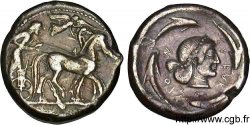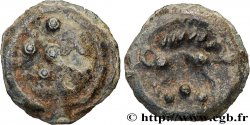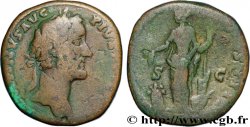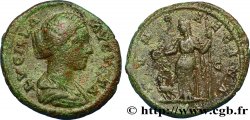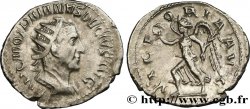- Accueil
- >
- >
v57_0029 - SICILIA - SIRACUSA Tétradrachme
MONNAIES 57 (2013)
起拍价 : 450.00 €
估价 : 750.00 €
未售出的物品
起拍价 : 450.00 €
估价 : 750.00 €
未售出的物品
种类 Tétradrachme
日期: c. 480-475 AC.
铸币厂名称/城市 Syracuse, Sicile
材质 silver
直径 25 mm
模子方针 4 h.
重量 17,00 g.
稀少度 R1
发行人: groupe 3, série 8-11
关于品相的说明
Exemplaire sur un flan ovale, bien centré des deux côtés avec le grènetis visible au droit à l’usure importante, mais parfaitement visible et identifiable. Droit et revers de très joli style archaïsant dans la droite ligne de la statuaire et de la céramologie grecques. Patine gris foncé de collection ancienne avec des reflets dorés
正面
正面的文字 ANÉPIGRAPHE.
正面的说明书 Bige au pas à droite, conduit par un aurige tenant les rênes et le kentron ; le bige est couronné par Niké volant à droite.
背面
背面的文字 N RÉTROGRADE ET LÉGENDE MOLLE.
背面的说明书 Tête d'Aréthuse à droite, les cheveux relevés et retenus par un diadème de perles, entourée de quatre dauphins.
背面铭文 SUR-AK-OS-I-O-N
评论
Style très caractéristique tant de l’émission que de la statuaire féminine de l’époque. Même coin de revers que l’exemplaire du trésor de Randazzo (n° 354) et mêmes coins que celui de la collection de l’American Numismatic Society (ANS n° 59, pl. 3). Le coin de droit (A/ 83) n’a pas été réutilisé et est recensé pour trois exemplaires au total (Berlin, Paris et New York). Le coin de revers (R/ 127) est lié au numéro 185 (pour un total de 4 exemplaires).
Very characteristic style of both the issue and the female statuary of the period. Same reverse die as the Randazzo Treasure example (No. 354) and same dies as the one in the American Numismatic Society collection (ANS No. 59, pl. 3). The obverse die (A/ 83) was not reused and is recorded for three examples in total (Berlin, Paris and New York). The reverse die (R/ 127) is linked to number 185 (for a total of 4 examples)
Very characteristic style of both the issue and the female statuary of the period. Same reverse die as the Randazzo Treasure example (No. 354) and same dies as the one in the American Numismatic Society collection (ANS No. 59, pl. 3). The obverse die (A/ 83) was not reused and is recorded for three examples in total (Berlin, Paris and New York). The reverse die (R/ 127) is linked to number 185 (for a total of 4 examples)







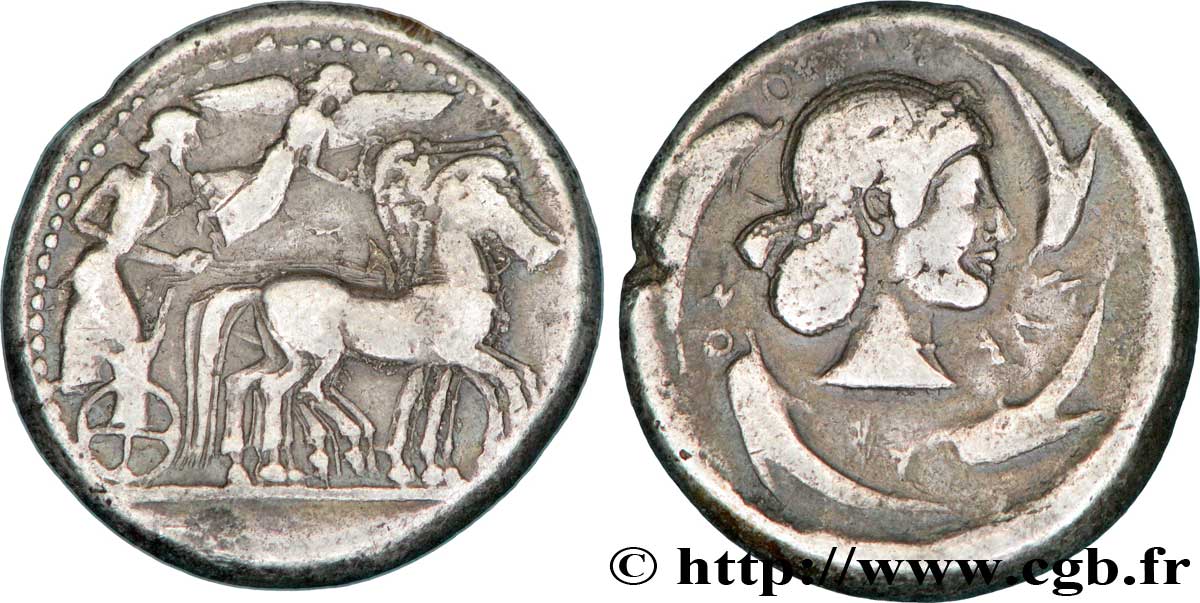
 对产品描述纠错
对产品描述纠错 打印
打印 分享我的选择
分享我的选择 提问
提问 Consign / sell
Consign / sell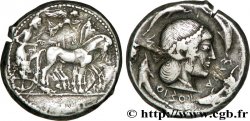
 产品介绍
产品介绍